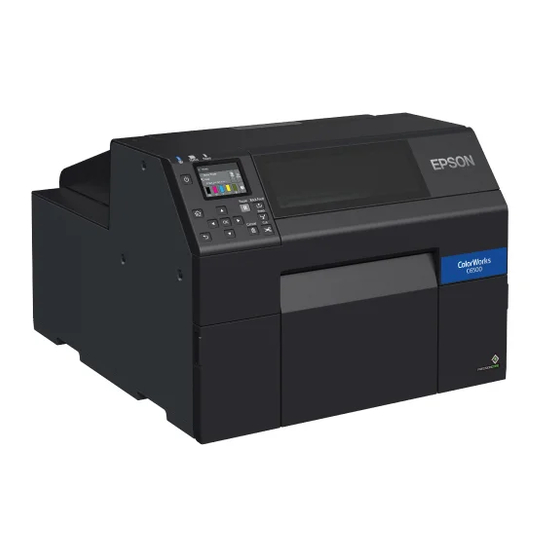
Epson ColorWorks C6500Au Technical Reference Manual
Hide thumbs
Also See for ColorWorks C6500Au:
- User manual (116 pages) ,
- Start here manual (8 pages) ,
- Start here manual (8 pages)
Table of Contents
Advertisement
Quick Links
Technical Reference Guide
Product Overview
Describes features for the product.
Setup
Describes setup and installation of the product.
Handling
Describes how to handle the product.
Information for Application
Development
Describes how to control the printer and necessary
information when you develop applications.
Appendix
Describes specifications of the product.
M00125300
Rev.A
Advertisement
Table of Contents













Need help?
Do you have a question about the ColorWorks C6500Au and is the answer not in the manual?
Questions and answers
Fail while trying to install printer to computer. Two different computers. I'm not seeing a discoverable setting on the printer itself. CW-C6500Au. Just a lot that I'm not following. Sorry in advance. :( Probably something stupid.
To resolve installation issues with the Epson C6500Au printer on multiple computers, follow these steps:
1. Check for Duplicate Printer Drivers: If the printer is installed multiple times, duplicate drivers may exist (e.g., “CW-C6XXX (Copy 1)”). Right-click on any duplicate icons and select "Remove device" to delete them.
2. Set the Default Printer: Go to "Devices and Printers," right-click the correct printer icon, and select "Set as default printer."
3. Perform a Test Print: Right-click the printer icon, select "Printer properties," and click "Print Test Page" on the General tab to confirm data is sent to the printer.
4. Download the Correct Drivers: Ensure you download and install the correct printer driver for your operating system (32-bit or 64-bit Windows, or Linux) from the official source.
5. Update Firmware if Needed: Download and install the latest firmware for the printer. Administrative credentials may be required.
Following these steps will help ensure proper installation and communication between the printer and multiple computers.
This answer is automatically generated
what should we do...we have a message that says Turn On The Printer Again. See Your Documentation For More Details. 00080000
The error message "Turn On The Printer Again. See Your Documentation For More Details. 00080000" on the Epson C6500Au printer indicates a general printer error has occurred. The recommended action is:
1. Turn off the printer.
2. Check for paper jams or foreign objects near the ejection slot.
3. Turn the printer back on.
If the error persists, contact qualified service personnel and provide the code "00080000" for further assistance.
This answer is automatically generated